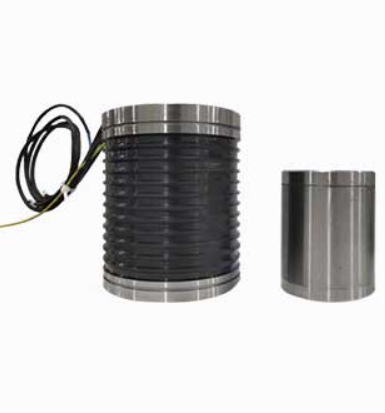
For asynchronous motors, slip is a necessary condition for motor operation, that is, the rotor speed is always less than the rotating magnetic field speed. For synchronous motors, the stator rotor magnetic field always maintain the same steps, that is, the rotation speed of the motor is consistent with the magnetic field speed, when the two show inconsistent steps, there is a difference, that is, out of step.
the structural analysis, the stator structure of synchronous motor is no different that of asynchronous machine. When a three-phase current is passed, a synchronous rotating magnetic field will occur; The rotor part of the motor also has a sinusoidal field of DC excitation, which can also be generated through a permanent magnet.
When the motor is running normally, the rotation speed of the rotor magnetic field is consistent with the rotation speed of the stator magnetic field, that is, the stator the rotor magnetic field are relatively fixed in the spatial orientation, which is the synchronous essence of the synchronous motor, once the two are inconsistent, it is considered that the motor is out of step.
Taking the rotation direction of the rotor as reference, when the rotor magnetic field is ahead of the stator magnetic field, it can be understood that the rotor magnetic field is z-guide, that is, the n quantity transformation under the dynamic effect, the synchronous motor is the generator condition. On the contrary, it is still based on the rotation direction of the motor rotor as a reference, when the rotor magnetic field lags behind the stator magnetic field, we can understand that the stator magnetic field pulls the rotor movement, the motor is in the motor condition. During the operation of the motor, when the load dragged by the rotor is added, the backward degree of the rotor magnetic field relative to the stator magnetic field will be added, the front back of the two are characterized by the circumference Angle, which is also called the power Angle, the size of the power Angle can represent the power of the motor, that is, in the case of the same rated voltage rated current, the greater the power corresponding to the power Angle is also greater.

Whether the motor condition is still the generator condition, when the motor is no-load, the theoretical power Angle is zero, that is, the two magnetic fields are completely coincident, but the actual situation is that due to some losses of the motor, there is still a power Angle between the two, but it is small.
When the rotor the stator magnetic field are synchronized, the motor power Angle will change. When the rotor lags behind the stator magnetic field, the stator magnetic field exerts a driving force on the rotor. When the rotor magnetic field is ahead of the stator magnetic field, the stator magnetic field exerts resistance on the rotor, so the average torque is zero. Because the rotor did get the torque power, it gradually stopped.
When the synchronous motor is running, the stator magnetic field drags the rotor magnetic field to rotate. There is a fixed moment between the two magnetic fields, the speed of both must be equal. Once the speed of the two is equal, the synchronous torque does exist, the motor will gradually stop. This rotor speed is synchronized with the stator magnetic field, the phenomenon that the synchronous torque disappears the rotor gradually stops is called "out-of-step phenomenon". When the out-of-step phenomenon occurs, the stator current rises rapidly, which is very unfavorable, the power supply should be blocked as soon as possible to avoid damage to the motor.